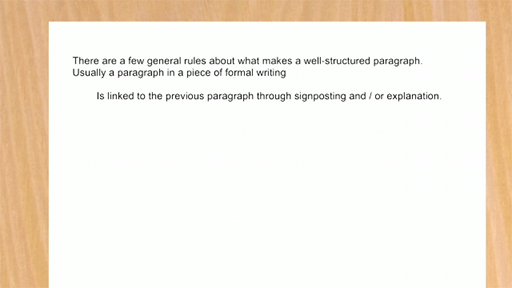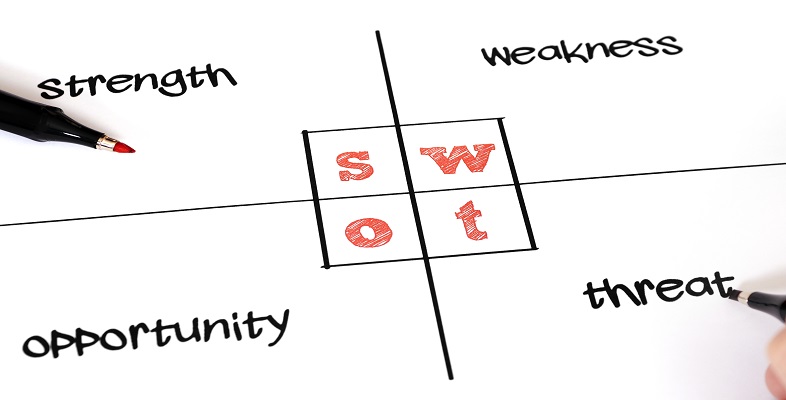8.2 How to structure a paragraph
You’ll now listen to an explanation of the key factors that make the paragraph just examined so well structured.
Activity 13
Watch the following video, and note down any points which you find particularly useful. Listen more than once if necessary.
Download this video clip.Video player: lb170_2017j_vid003_640x360.mp4


Transcript
INSTRUCTOR:
There are a few general rules about what makes a well-structured paragraph. Usually a paragraph in a piece of formal writing is linked to the previous paragraph through sign posting and/or explanation, makes the main point, often called a high-level generalisation, in the first sentence or the first couple of sentences, develops the main point through giving examples or further details, often called low-level generalisations, uses signposting to guide the reader, [and] uses pronouns to refer back to information already given- for example, this, it, or they.
As mentioned in the previous activity, this first sentence of the paragraph signals to readers that we're moving on to a new topic, weaknesses. The word ‘although’ shows that this topic contrasts with the information in the previous paragraph. This is a sign of good writing because it connects back to the previous paragraph, and it signals a new topic and how it connects to the information that went before.
In the second sentence, the writer starts with what he has identified as the main weakness. This is a very good way to start the topic, as it follows the rule that ordering of information in a paragraph should move from more general high-level information to more specific details and low-level information, consisting of examples and details to illustrate the main point made.
It is more helpful to your reader to start with a main point, high-level information, and move onto details. It means that when you transfer the information from a SWOT table to your written analysis, it is important to list the points in order of importance rather than just following the original order.
The third sentence now moves on to give details which support the main point made in the previous sentence. It expands the point. As explained in the previous activity, this sentence uses signposting to refer back to the topic of the previous sentence. The use of the word ‘this’ tells the reader that the writer is talking about the growing just mentioned previously.
The sentence also brings in new information in the form of reasons- inefficient production methods- to explain the weakness outlined in sentence three- unable to match the growth in the market. The fifth sentence brings in a new weakness. There is no sign posted link made to the previous sentence, but the topic of production, mentioned in both sentences, is sufficient to keep the reader following the focus of the text.
This sentence is signposted with the word ‘finally’, indicating that we are moving to the last areas of weakness to be mentioned in the paragraph. The final sentence of the paragraph gives further information on the final area of weakness, made up of reasons for the lack of research and development.
Interactive feature not available in single page view (see it in standard view).
Answer
Your notes will depend on which information you found useful, but they may contain the following information.
There are a few general rules about what makes a well-structured paragraph. Usually a paragraph in a piece of formal writing:
- is linked to the previous paragraph through signposting and/or explanation
- makes the main point (often called a high-level generalisation) in the first sentence or the first couple of sentences
- develops the main point through giving examples or further details (often called low-level generalisations)
- uses signposting to guide the reader
- uses pronouns to refer back to information already given, e.g. ‘this’, ‘it’ or ‘they’.
